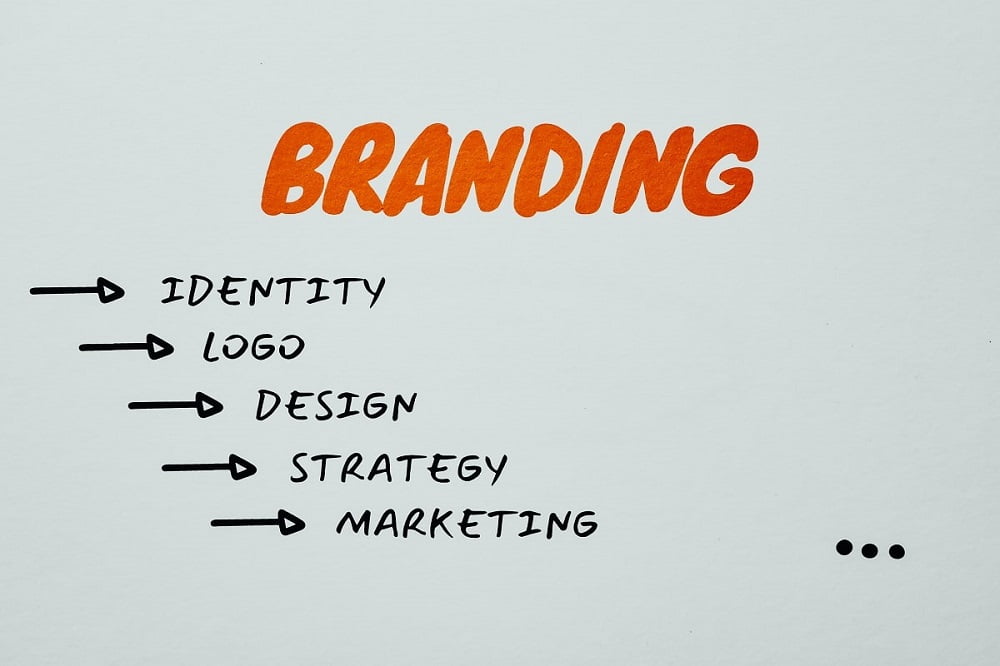What is the importance of branding and what stands behind it? But what is branding? It’s the art of creating a distinct identity that resonates with your audience, weaving together visuals, values, and messaging to leave a lasting impression.

Despite the mass of brands nowadays, people choose particular ones. Have you ever considered why? Let’s explore this topic together.
The real importance of branding
So, you know what branding is, but why it matters? Branding sets successful businesses apart, guiding consumers through options, and cultivating trust, recognition, and loyalty. Let’s explore the benefits regarding the importance of branding:
- Your brand can stand out in a crowded marketplace.
- You can build a reputation that speaks for itself.
- Your brand may be unforgettable.
- Your first-time buyers can turn into lifelong fans.
- You can carve out your niche and own it.
- You can inspire your team with a brand they’re proud to represent.
Branding strategies and techniques
Crafting a clear brand strategy is a must-have now. It is a long-term plan that outlines how a company intends to build, position, and manage its brand to achieve its business objectives. It involves defining the brand’s purpose, values, and personality, as well as identifying the target audience and understanding their needs and preferences.
Brand strategy also includes determining the brand’s unique selling proposition (USP) or value proposition, which is the distinctive benefit or advantage that sets it apart from competitors in the minds of consumers.
Additionally, brand strategy contains decisions related to brand architecture, messaging, visual identity, communication channels, and marketing tactics. A well-defined brand strategy serves as a roadmap for consistent and cohesive branding efforts across all aspects of the business, ultimately contributing to brand differentiation, customer loyalty, and business growth. Successful brand image marketing efforts often play a significant role in shaping the overall reputation, personality, and attributes associated with a brand.
Elements of Successful Branding
What do successful brands share? Here are some common traits:
- Consistent visuals – the successful brand is instantly recognizable.
- Authenticity and transparency – trust is built through honesty and integrity.
- Passionate connection – strong emotional bonds go beyond transactions.
- Exceptional customer experience – delighted customers at every touchpoint.
- Differentiation – it’s good to stand out in a sea of sameness.
- Adaptability and innovation – staying relevant in a rapidly changing world.

The importance of branding trends
Branding trends are current practices and strategies that companies use to establish and maintain their brand identities. Trends in branding evolve in response to changes in consumer behavior, technological advancements, cultural shifts, and competitive landscapes. Some current branding trends include:
- Purpose-driven branding – stands for something bigger than profit.
- Personalization – tailor your messaging to individual preferences.
- Visual storytelling – capture hearts and minds with stunning imagery.
- Minimalist design – less is more in today’s cluttered world.
- Interactive brand experiences – engage your audience in new ways.
- Voice and audio branding – make your mark in the acoustic terrain.
- Sustainability – show commitment to the planet and its people.
- Inclusive branding – celebrate diversity and embrace inclusivity.
- Brand activism – take a stand and make a difference.
- Community building – Foster connections that transcend transactions.
Building a strong brand presence
Crafting a strong brand presence involves establishing a prominent and recognizable identity for your brand across various platforms and touchpoints. This leads to high brand awareness, which is the ability of consumers to recall or recognize a brand when presented with its name, logo, or other identifying elements.
Let’s take a closer look at what a strong brand presence requires:
- Clear brand identity – that includes your mission, values, personality, and target audience.
- Memorable visuals – a visually appealing and consistent brand identity, including a distinctive logo, colors, fonts, and imagery.
- Effective messaging – clear and compelling messaging that communicates the brand’s value proposition, resonates with the target audience and sets it apart from competitors.
- Strong online presence – a website, social media channels, and other digital platforms.
- Engaging with the audience – actively engaging with the audience on social media, through email marketing, and other channels.
- Establishing thought leadership – positioning as an authority in the industry by sharing valuable content, insights, and expertise.
- Collaborating with influencers – partnership with influencers, brand ambassadors, and strategic partners who align with your brand values and have a relevant audience.
- Staying consistent and evolving – maintaining consistency in branding efforts while also staying adaptable and evolving with changing market trends and consumer preferences.
What about the results? Let’s see the statistics around consumer behavior and brand perception:
Brand and business promotion methods
Additionally, I have here some business promotion methods:
- Advertising – paid promotion across TV, radio, print, online, and social media.
- Content marketing – sharing valuable content to engage potential customers.
- SEO – optimizing website content to rank higher on search engines.
- Social media marketing – using platforms to build brand awareness and promote products.
- Email marketing – sending targeted emails to subscribers for promotions or updates.
- Events/sponsorships – participating in or sponsoring events for brand visibility.
- PR – building relationships with media and influencers for positive publicity.
- Sales promotions – offering discounts or incentives to drive purchases.
- Direct marketing – sending promotional materials directly to individuals or businesses.
- Referral programs – encouraging customers to refer new ones for rewards.
(Feb 12.2024, Source)
Branding psychology and consumer behavior
Interested in consumer behavior? Explore the psychological principles contained within branding psychology:
- Emotional appeal
Emotions play a significant role in consumer decision-making. Brands that evoke positive emotions such as happiness, trust, or nostalgia are more likely to resonate with consumers and create lasting connections.
- Brand color psychology
Different colors can evoke specific emotions and perceptions in consumers, making color psychology for branding a valid point. For example, blue is often associated with trust and professionalism, which is why many financial institutions use it in their branding. Similarly, red can convey energy and excitement, making it a popular choice for brands in the food and beverage industry.
- Brand perception
Consumers often make judgments about brands based on their perceptions, rather than objective facts. Brand perception is influenced by factors such as brand image, reputation, and associations.
- Cognitive biases
These are mental shortcuts that influence how people process information and make decisions. Common biases such as confirmation bias, anchoring bias, and social proof can impact consumer behavior in branding contexts.
- Trust and credibility
Trust is essential in building strong relationships between brands and consumers. Consumers are more likely to purchase from brands they trust and perceive as credible.
- Behavioral economics
This field examines how psychological factors influence economic decisions. Concepts such as loss aversion, scarcity, and the endowment effect can influence consumer behavior and purchasing decisions.
- Brand loyalty and habit formation
Once consumers have formed positive associations with a brand, they are more likely to exhibit brand loyalty and repeat purchase behavior. Brands can foster loyalty by providing consistent experiences, rewards for loyalty, and personalized interactions.
- Social influence:
Social factors, such as peer recommendations, social norms, and influencer endorsements, can influence consumer behavior.
Successful brand campaigns
Learn from the best with these iconic brand campaign examples:
- Nike: The “Just Do It” campaign, launched in 1988, is one of the most iconic and enduring branding campaigns in history. It encouraged athletes to push their limits and resonated with consumers on a deep emotional level.
- Apple: The “Get a Mac” campaign from 2006 to 2009 featured humorous ads comparing Mac computers to PCs. It effectively highlighted the benefits of choosing a Mac over a PC, such as reliability, simplicity, and innovation.
- Coca-Cola: The “Share a Coke” campaign, launched in 2011, personalized Coke bottles with popular names, encouraging consumers to share a Coke with friends and loved ones. It created a sense of personal connection and drove increased engagement and sales.
- Dove: The “Real Beauty” campaign, launched in 2004, challenged traditional beauty standards and celebrated diversity and inclusivity. Featuring real women of all shapes, sizes, ages, and ethnicities, it promoted a message of self-acceptance and body positivity.
- Old Spice: “The Man Your Man Could Smell Like” campaign, launched in 2010, featured actor Isaiah Mustafa in humorous ads promoting Old Spice body wash. It went viral, generating millions of views on YouTube and revitalizing the brand’s image among younger consumers.
- Budweiser: The “Whassup?” campaign, launched in 1999, featured friends greeting each other with the catchphrase “Whassup?” in comedic ads. It became a cultural phenomenon, spawning parodies and earning widespread recognition.

Additional Branding Resources
Here are some books about branding:
- “Building a StoryBrand: Clarify Your Message So Customers Will Listen” by Donald Miller
- “Brand Thinking and Other Noble Pursuits” by Debbie Millman
- “Designing Brand Identity: An Essential Guide for the Whole Branding Team” by Alina Wheeler
- “How Brands Grow: What Marketers Don’t Know” by Byron Sharp
- “The Brand Gap: How to Bridge the Distance Between Business Strategy and Design” by Marty Neumeier
Conclusion – The importance of branding today
By now, you probably already know the importance of branding. It’s about more than just a logo or a catchy tagline. Building a brand identity that is authentic, consistent, and engaging is the ultimate goal. Your brandmark is the visual representation of your unique story. By sharing that story, you can connect with your audience on a deeper level. Remember, your brand is a journey, not a destination.
Create a brand image that leaves a positive impression in the minds of customers!
FAQ: The importance of branding today
Q1: What exactly is branding?
Branding is the process of creating and promoting a unique identity for the brand. It is the way the audience sees it.
Q2: Why is authenticity emphasized in branding?
Authenticity is crucial because it builds trust and connection with the audience. Authenticity sets the foundation for a strong and lasting brand.
Q3: How can I maintain consistency in my branding efforts?
Consistency involves using the same visual elements, messaging, and tone across all online and offline platforms. This includes a website, social media profiles, content, and interactions with the audience. Consistency will help you establish a recognizable and reliable brand.
Q4: What are concepts such as loss aversion, scarcity, and the endowment effect?
Loss aversion is preferring to avoid losses over acquiring equivalent gains. Scarcity is the perception that rarity increases value and desire. The endowment effect is about valuing owned items more than identical ones not owned.
Q5: What are confirmation bias, anchoring bias, and social proof?
Confirmation bias is favoring information that confirms our existing beliefs. Anchoring bias is relying too heavily on the first piece of information we receive. Social proof is the tendency to follow the actions or opinions of others.
If you have any questions or need help, feel free to contact me.
Check my YouTube channel for future content.




